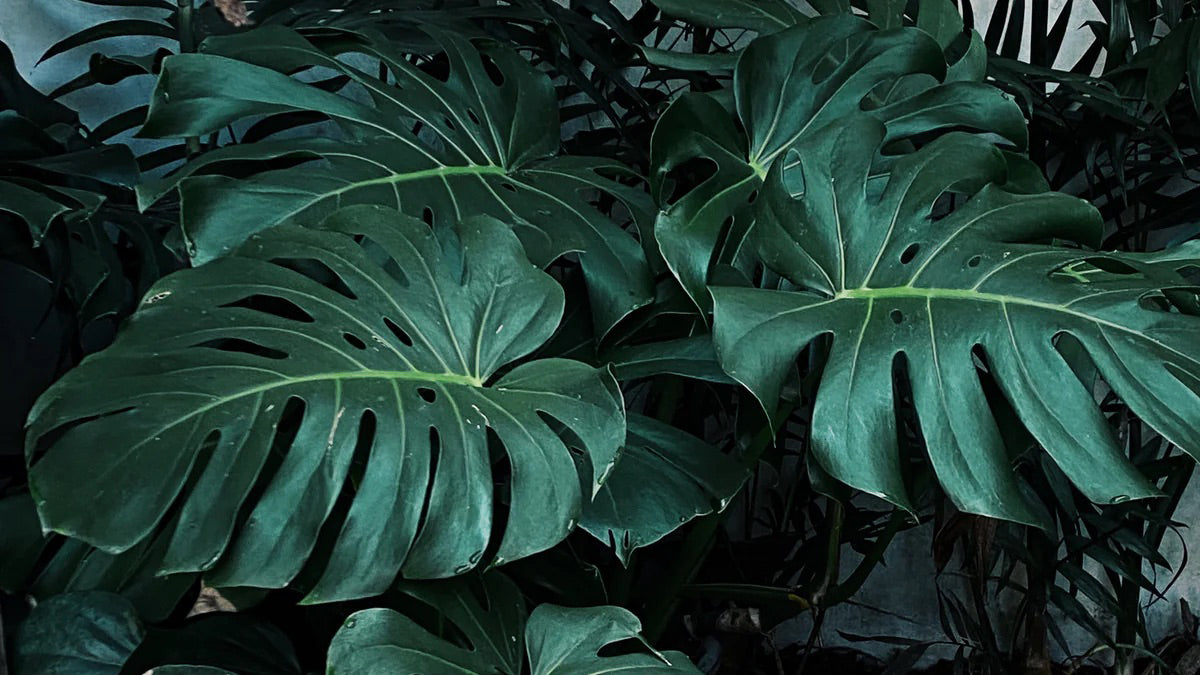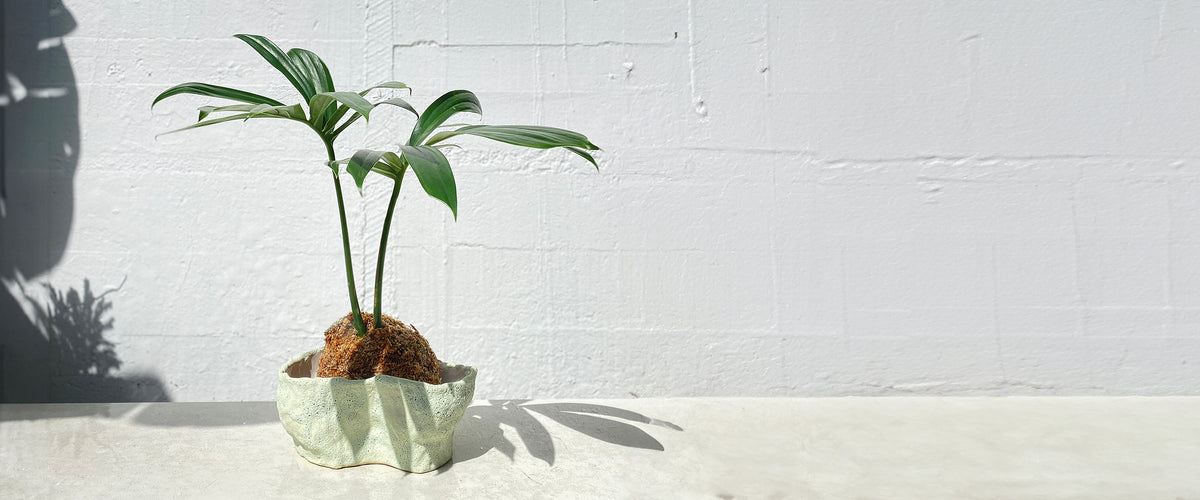What's Up Monstera?

A comprehensive guide to caring for your Monstera deliciosa
Monstera deliciosa are arguably one of the best ways to achieve instant lush vibes in your home. Their giant, fenestrated leaves fill a space beautifully, but getting them to this stage can come with it's trials.
Monstera are epiphytic plants, starting their lives on the forest floor of southern Mexico, and slowly using their aerial roots to attach to a tree. From there they climb up into the forest canopy, with the deliciosa variants growing more and more fenestrations and huge leaves up to 36" wide! (Although, curb your expectations for this as they don't grow quite so big indoors!) It's theorised that the fenestrations are formed to help the lower leaves receive more light.
Caring for a Monstera
Soil
Monstera do best in a well draining chunky soil mix, to imitate the texture of the trees they grow in and allow the roots to get the perfect amount of moisture, without being too damp. If you don't have access to or don't want to make your own chunky soil mix, these plants still do just fine in your average indoor plant potting mix you'd buy from a garden centre. Just make sure you water less and keep in a smaller pot, as this soil takes longer to dry out.
If you have a variegated monstera such as a Thai Constellation or Albo, we would not recommend this as they are a lot fussier than your average Monstera, and can get root rot easily. Stick with strictly chunky soil mix for these guys.
Water
It's best to let monstera dry out before watering. If the top few inches are dry, your monstera is most likely ready to be watered. Monstera have chunky roots, so they can retain moisture for quite a while before needing water. This is especially important with variegated species.
Light
To get those beautiful fenestrations (and an all round healthy plant), it's absolutely essential you place a monstera in a bright room. Plenty of light will mimic the conditions a monstera has in a forest canopy, allowing it to fenestrate. Be sure not to place it in direct sunlight, as this can burn the leaves. Some very mature outdoor monstera can handle direct light as they have hardened to the sun, but indoor monstera are a little more delicate.
Common Questions
Monstera are generally a really easy to grow plant, but there are a few more specific questions that we've noticed people asking us.
How do I get my monstera to stop being so floppy?
Monstera are lianas, meaning they attach their roots to the textured bark of a tree and climb towards the sun. If an indoor monstera isn't given a support, they will eventually just fall over as they can't grow upright like a tree can. Some plants can climb or trail, but deliciosa just look downright silly without a support! There are a few options for supports, from basic like a bamboo pole, to ideal like a filled mesh pole. You can fill these with a variety of things from chunky bark to spagnum moss, and a plastic or plastic coated mesh rolled into a tube. This video here by Sydney Plant Guy is a great tutorial on how to do this. Just make sure with any support pole that you avoid breaking any roots, as this can really shock the plant.

A variegated monstera on a homemade moss pole
What do I do with these weird roots?
Monstera have what are called aerial roots, which they use to hang onto a tree's bark to help them climb. In an indoor environment, they can often sprawl all over the place and get stepped on if they don't have something to cling onto, say if they're supported with a bamboo pole. A lot of people ask us if they can chop them off. The short answer is yes, that's totally fine. It won't really affect the plant as it already has an existing root system in the soil, and the aerial roots can't really absorb any nutrients from your carpet/wood floor. If they really bother you and they're trying to climb into your nooks and crannies, chopping them off or just trimming them is fine. Otherwise, they can be really helpful with boosting your plants growth if it's on a moss pole, and we think they can look really pretty! You can always place the monstera up on a pedestal to keep the roots off the floor.

How do I propagate my Monstera?
Propagating a monstera is super easy! First you need to know where to cut. With most vining plants, you need to include a node. All you need to do is cut below a node and pop it in water, then wait patiently for a root system to form. You can also use air layering, which is done by placing a layer of spagnum moss over a node with a forming aerial root, and sealing it with something plastic like glad wrap.

A diagram of a vining plant
Tips & Tricks
Your monstera can really benefit from some misting. Whether you use a mister bottle or you have a humidifier, these tropical plants love a bit of humidity on their leaves. This can help prevent crispy edges and promote a happier plant. Just be aware that you want a bit of air flow going on to make sure water isn't staying stagnant on the plant.
Another tip for a happy monstera is to clean the leaves! We love to use our Plant Runner Leaf Shine, a plant based leaf shine made with neem. Spraying the leaves and giving them a good wipe down removes dust, prevents bugs and also they look nice and shiny afterwards (great plus!). If you don't want to use leaf shine, you can always just use some warm water and a microfibre cloth.
Don't forget to fertilise! Feed a small amount according to directions every second watering in the warmer months. It's important to only fertilise during active growth, as your plant won't be able to absorb fertiliser in it's dormant period, and feeding it then can lead to fertiliser burn and a sad plant. Fertilising is essential for growing a happy, healthy plant with mature leaves.
Hopefully you learned a little something from us! Good luck wrangling those plants with your new knowledge.
